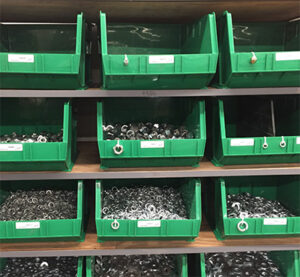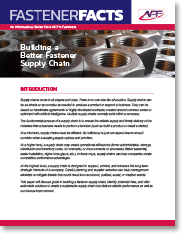Defining what is “better” in any supply chain operation requires consideration of various factors and is dependent on the nature of the business.
Optimized quality, reliability, service, and cost are basic supply chain fundamentals. For higher levels of value, supply chain managers may incorporate value-added vendor services such as warehousing, vendor managed inventory, kitting, just-in-time delivery, custom shipping, and labeling. Information management systems (ERP systems, reporting capabilities, billing and payment systems, etc.), and third-party services (logistics providers, financial services, etc.) also play key factors. At the highest strategic levels, comprehensive supply chain analysis will involve vendor project experience, competitive market considerations, vendor environmental practices, and social responsibility performance as key decision factors.
Defining what is better in each unique situation – given the importance of these factors – is a necessary starting point in building a better supply chain.
 Attributes of Better Supply Chains
Attributes of Better Supply Chains
From simple to complex, all supply chains must provide the framework for achieving the reliable, efficient, and uninterrupted supply of products and services. These “musts” are necessary to support the operational and strategic needs of the business. In this section, we will briefly discuss important attributes that help define what “better” supply chains look like. Not all attributes will apply to every situation.
We expect supply chains to be efficient, but efficiency is not enough to be “better.” As a point of context, supply chain decisions that are based on efficiency, at the expense of other factors, can prove to be counterproductive.
Consider the case of “High-Speed, Low-Cost Supply Chains” that are unable to respond to unexpected changes in demand or supply, as discussed by Hau L. Lee, the Thoma Professor of Operations, Information & Technology at Stanford Graduate School of Business. “Supply chain efficiency is necessary, but it isn’t enough to ensure that firms will do better than their rivals,” according to Lee. “Only those companies that build agile, adaptable, and aligned supply chains get ahead of the competition.”1
In the quest for a better supply chain, it is important to look beyond mere efficiency and reliability (the basic characteristics of any supply chain), to discuss additional characteristics required for agile, sustainable and adaptable supply chains.
1 Harvard Business Review, The Triple-A Supply Chain, Hau L. Lee, October 2004 https://hbr.org/2004/10/the-triple-a-supply-chain
 Agility
Agility
It’s no secret that supply and demand continually fluctuate. Agile supply chains are able to quickly respond to unexpected changes in supply and demand, efficiently and cost effectively.
Agile supply chains help companies achieve competitive advantages in the market and – in the case of disruptions caused by economic, political, or environmental events – can be essential to long-term business risk mitigation.
The most important building block to a partnership is collaboration – suppliers and customers working together to develop smarter processes, continuously sharing data and responsibility, with incentives to react dynamically to changes in supply and demand.

 Attributes of Better Supply Chains
Attributes of Better Supply Chains Agility
Agility

 Sustainability
Sustainability








 The process of building better supply chains is never-ending. Ongoing efforts to optimize processes, materials, product designs, logistics, and assembly methodologies are essential to maintaining competitiveness and leading the way to innovation.
The process of building better supply chains is never-ending. Ongoing efforts to optimize processes, materials, product designs, logistics, and assembly methodologies are essential to maintaining competitiveness and leading the way to innovation.